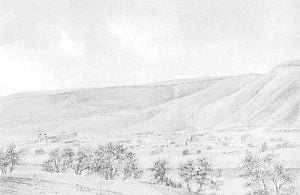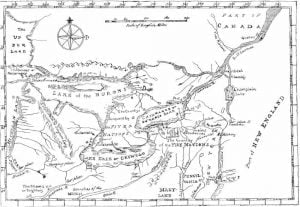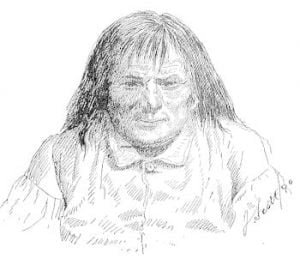San Juan Pueblo
San Juan lies upon the sand dunes, 20 feet above the left bank of the Rio Granule. From this slight elevation the fields stretching to the north, west, and south show by their different colors that a variety of crops is produced. Compared to Taos, the character of San. Juan is more that of it great garden. Crossing the broad acequia, one leaves the arid sands to enter milk verdure. Trim fences of cedar limbs driven into time ground in close line or-dry brush Fastened upon posts with thongs of leather inclose little holdings of half tin acre or more, … Read more




